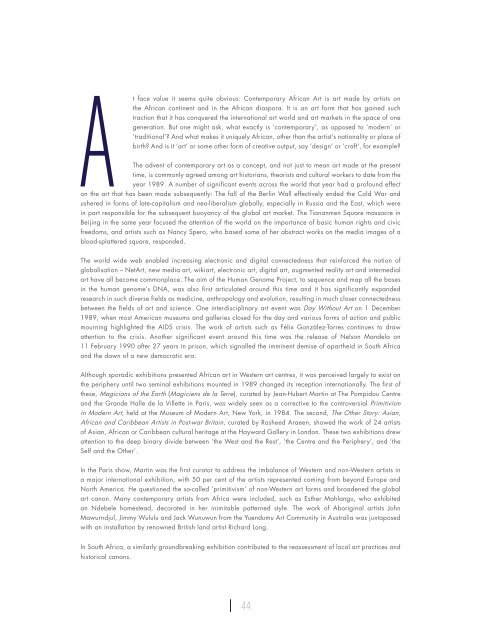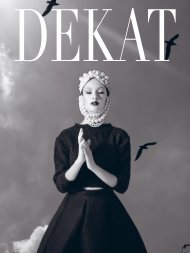DEKAT DIGITAL 2019 - 2020
DEKAT Magazine is the custodian of Afrikaans Culture. Well known for exceptional photography and design, the 2022 luxury edition will delight you. You will find topical lead articles, lifestyle articles focusing on art, culture, design and décor, motoring, food and wine and travel. In addition, we find hidden stories, meet extraordinary people and share divine recipes with you. The 320-page book is a unique window into the lives of the Bohemians and the Eccentrics living on the Southern tip of Africa.
DEKAT Magazine is the custodian of Afrikaans Culture. Well known for exceptional photography and design, the 2022 luxury edition will delight you. You will find topical lead articles, lifestyle articles focusing on art, culture, design and décor, motoring, food and wine and travel. In addition, we find hidden stories, meet extraordinary people and share divine recipes with you.
The 320-page book is a unique window into the lives of the Bohemians and the Eccentrics living on the Southern tip of Africa.
Create successful ePaper yourself
Turn your PDF publications into a flip-book with our unique Google optimized e-Paper software.
At face value it seems quite obvious: Contemporary African Art is art made by artists on<br />
the African continent and in the African diaspora. It is an art form that has gained such<br />
traction that it has conquered the international art world and art markets in the space of one<br />
generation. But one might ask, what exactly is ‘contemporary’, as opposed to ‘modern’ or<br />
‘traditional’? And what makes it uniquely African, other than the artist’s nationality or place of<br />
birth? And is it ‘art’ or some other form of creative output, say ‘design’ or ‘craft’, for example?<br />
The advent of contemporary art as a concept, and not just to mean art made at the present<br />
time, is commonly agreed among art historians, theorists and cultural workers to date from the<br />
year 1989. A number of significant events across the world that year had a profound effect<br />
on the art that has been made subsequently: The fall of the Berlin Wall effectively ended the Cold War and<br />
ushered in forms of late-capitalism and neo-liberalism globally, especially in Russia and the East, which were<br />
in part responsible for the subsequent buoyancy of the global art market. The Tiananmen Square massacre in<br />
Beijing in the same year focused the attention of the world on the importance of basic human rights and civic<br />
freedoms, and artists such as Nancy Spero, who based some of her abstract works on the media images of a<br />
blood-splattered square, responded.<br />
The world wide web enabled increasing electronic and digital connectedness that reinforced the notion of<br />
globalisation – NetArt, new media art, wikiart, electronic art, digital art, augmented reality art and intermedial<br />
art have all become commonplace. The aim of the Human Genome Project, to sequence and map all the bases<br />
in the human genome’s DNA, was also first articulated around this time and it has significantly expanded<br />
research in such diverse fields as medicine, anthropology and evolution, resulting in much closer connectedness<br />
between the fields of art and science. One interdisciplinary art event was Day Without Art on 1 December<br />
1989, when most American museums and galleries closed for the day and various forms of action and public<br />
mourning highlighted the AIDS crisis. The work of artists such as Félix González-Torres continues to draw<br />
attention to the crisis. Another significant event around this time was the release of Nelson Mandela on<br />
11 February 1990 after 27 years in prison, which signalled the imminent demise of apartheid in South Africa<br />
and the dawn of a new democratic era.<br />
Although sporadic exhibitions presented African art in Western art centres, it was perceived largely to exist on<br />
the periphery until two seminal exhibitions mounted in 1989 changed its reception internationally. The first of<br />
these, Magicians of the Earth (Magiciens de la Terre), curated by Jean-Hubert Martin at The Pompidou Centre<br />
and the Grande Halle de la Villette in Paris, was widely seen as a corrective to the controversial Primitivism<br />
in Modern Art, held at the Museum of Modern Art, New York, in 1984. The second, The Other Story: Asian,<br />
African and Caribbean Artists in Post-war Britain, curated by Rasheed Araeen, showed the work of 24 artists<br />
of Asian, African or Caribbean cultural heritage at the Hayward Gallery in London. These two exhibitions drew<br />
attention to the deep binary divide between ‘the West and the Rest’, ‘the Centre and the Periphery’, and ‘the<br />
Self and the Other’.<br />
In the Paris show, Martin was the first curator to address the imbalance of Western and non-Western artists in<br />
a major international exhibition, with 50 per cent of the artists represented coming from beyond Europe and<br />
North America. He questioned the so-called ‘primitivism’ of non-Western art forms and broadened the global<br />
art canon. Many contemporary artists from Africa were included, such as Esther Mahlangu, who exhibited<br />
an Ndebele homestead, decorated in her inimitable patterned style. The work of Aboriginal artists John<br />
Mawurndjul, Jimmy Wululu and Jack Wunuwun from the Yuendumu Art Community in Australia was juxtaposed<br />
with an installation by renowned British land artist Richard Long.<br />
In South Africa, a similarly groundbreaking exhibition contributed to the reassessment of local art practices and<br />
historical canons.<br />
44





